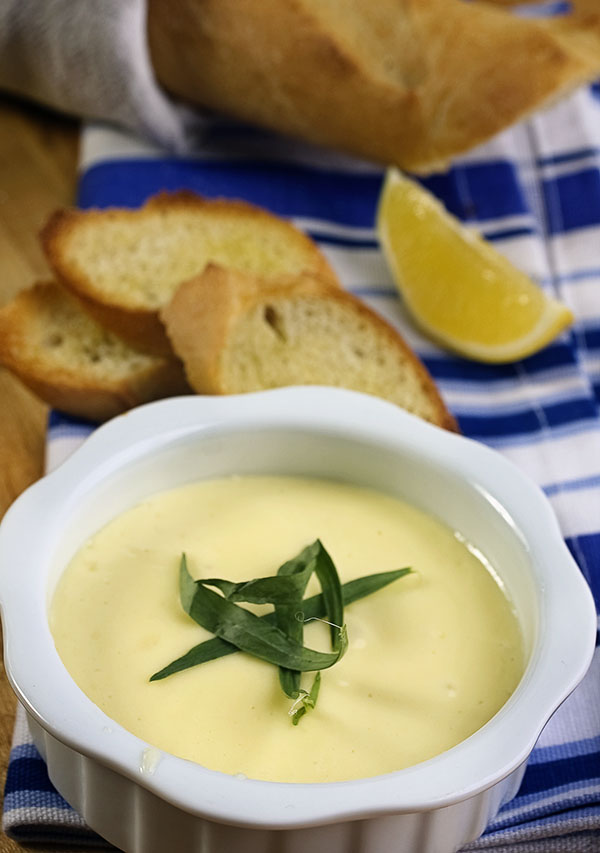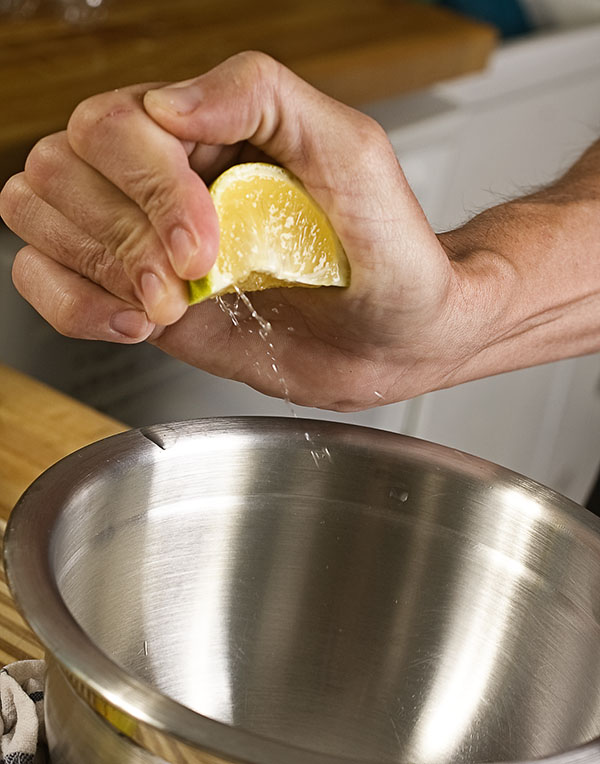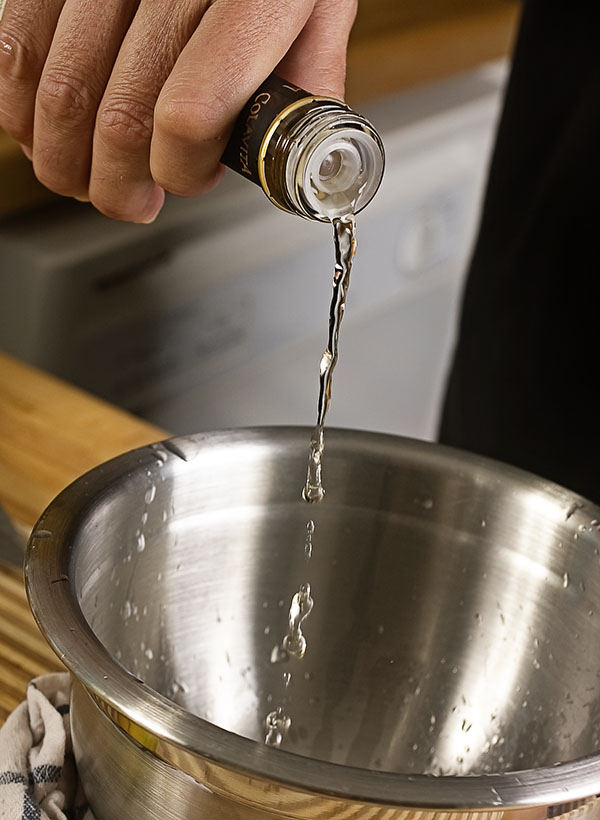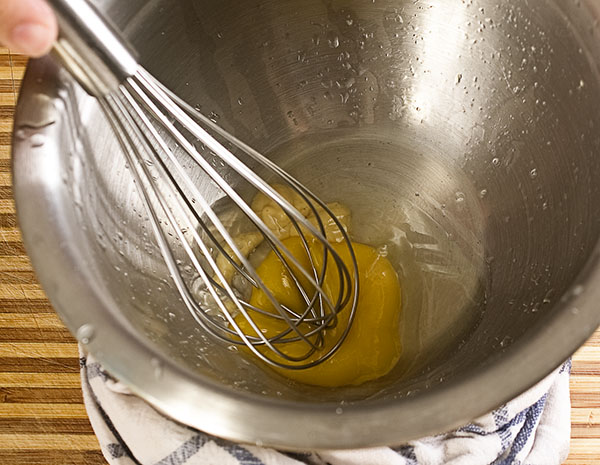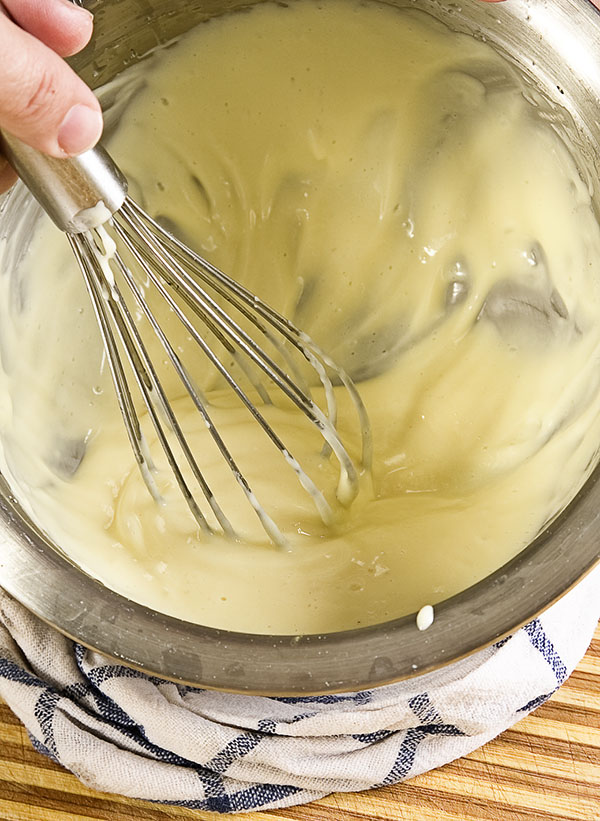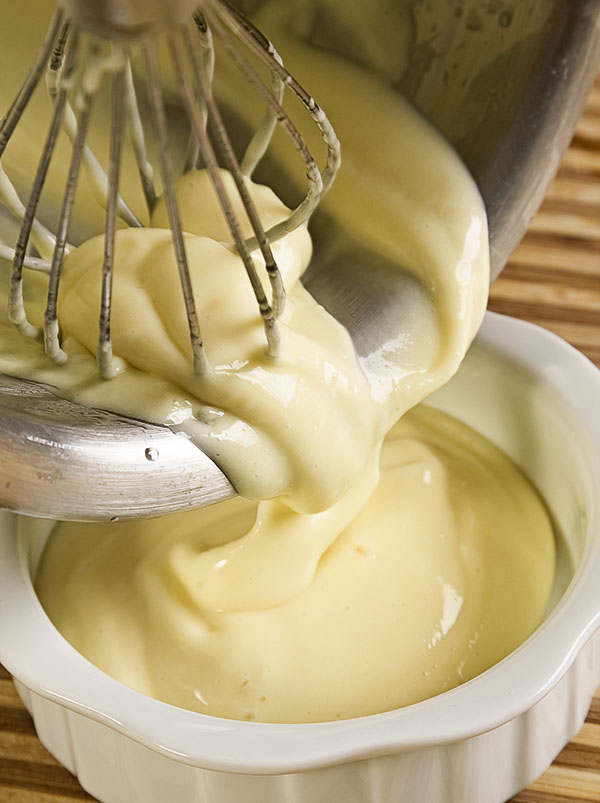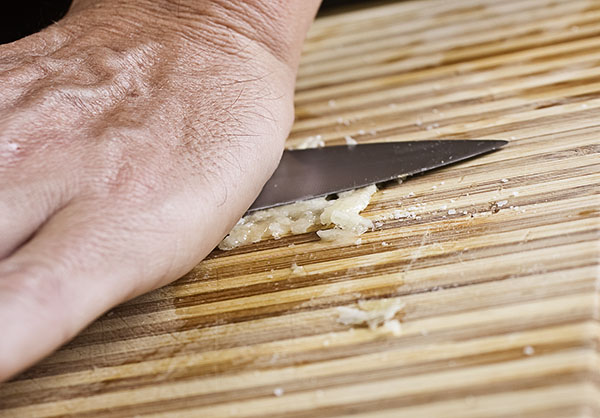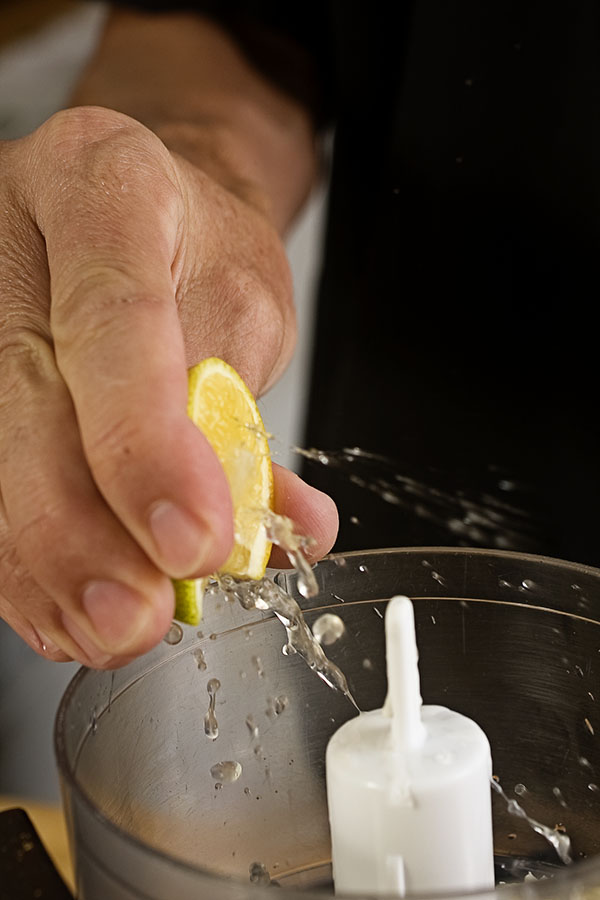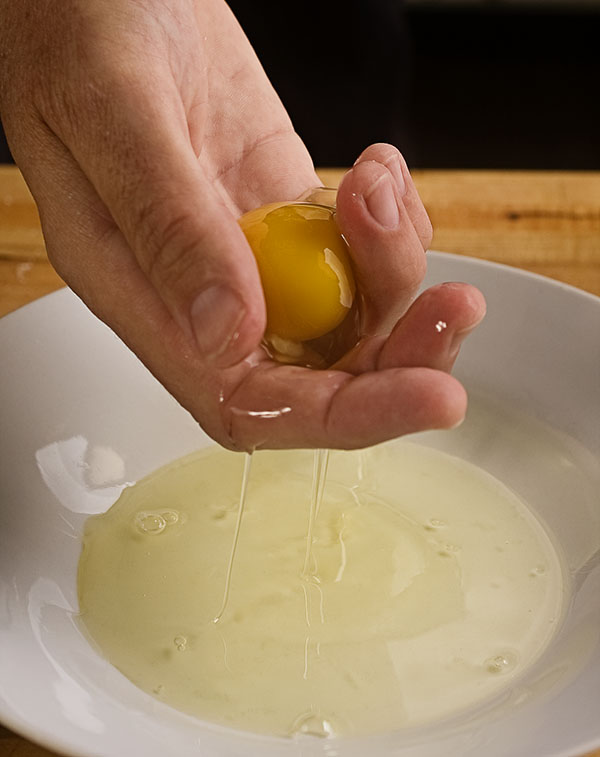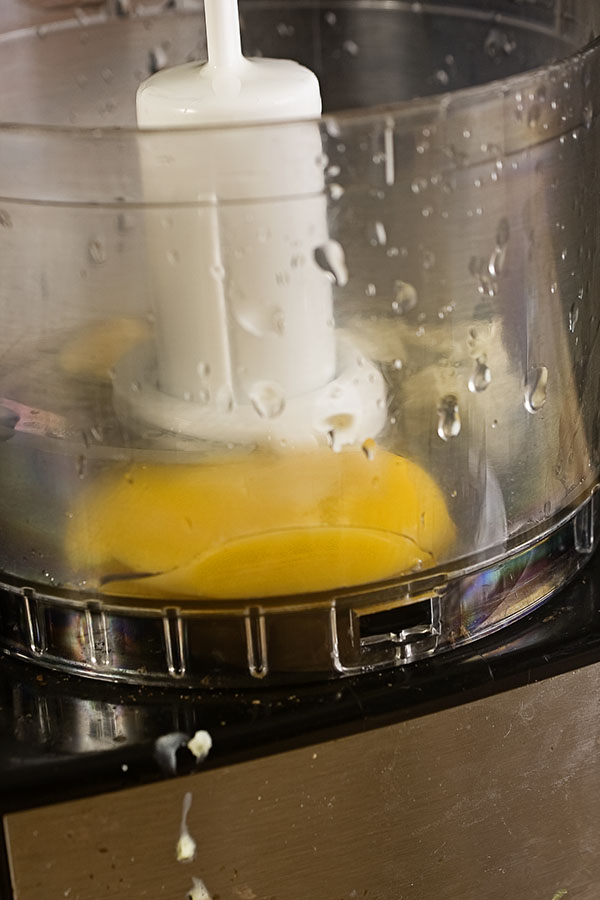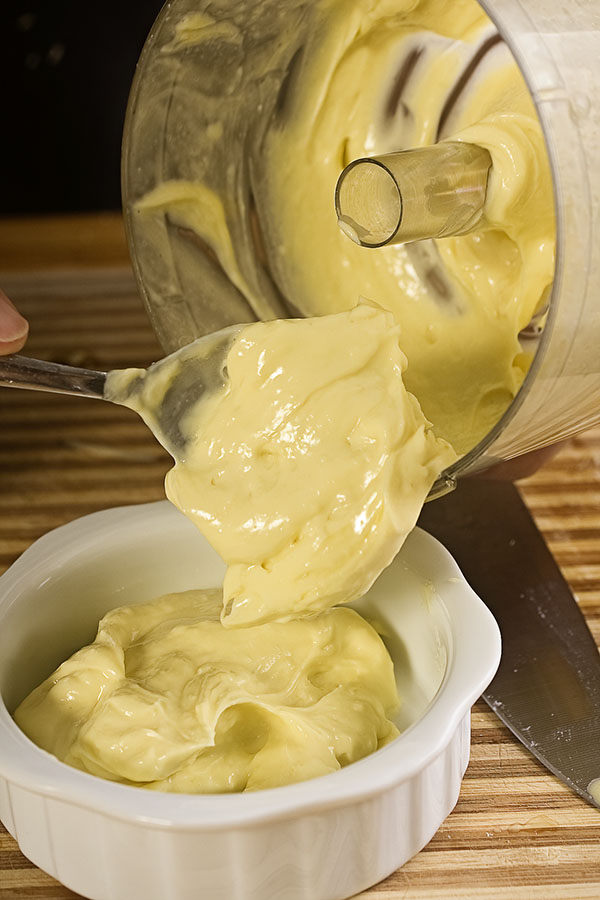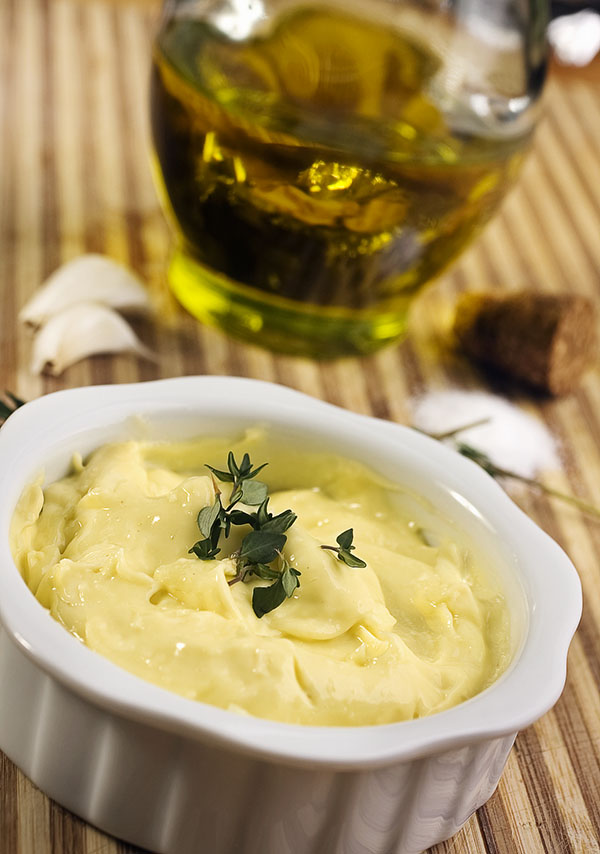The Basics: Mayo and Aioli
One of the most magical techniques in cooking is the emulsion. An emulsion is the creation of a semi-stable suspension between oil and water which may be fairly loose, like a vinaigrette, or a thicker consistency, like Bearnaise. The mayonnaise may be the thickest in the group, and one of the trickiest to master -- I make mayo and aioli often, and I still "break" one every now and then and have to start all over from scratch.
I wanted to make a basic mayonnaise and a basic aioli from scratch in two ways -- hand whisking and using a food processor. Time was, whisking was the only way to make a mayo. These days, technology has definitely created labor saving devices. The food processor can beat the oil and water emulsion into much smaller droplets than hand whisking, and without making your arm fall off. But, if I was ever stranded on a deserted island needing a mayo, and all I had was a whisk, it's good to know how to do it by hand.
When I was in high school, I worked in the kitchen and on the buffet of a dinner theater for a few months. I was fascinated by the huge food-service cans of tomato sauce and other ingredients. Once, I was in the kitchen waiting on another prime rib to come out of the oven, and someone told the chef we were out of mayonnaise on the buffet. The chef disappeared into the back room, and I expected him to come back out with a huge jar of mayo and ladle it into the serving bins. Instead, he came out with eggs, lemons, and some vegetable oil. He separated the yolks and dumped them in one of those big restaurant mixers, squeezed in the lemon juice, added salt and ground in some pepper, and here I am, 17 years old, wondering when he's going to go get the mayo. After drizzling in the oil and seeing what was going on in the mixing bowl, I realized what was happening -- he was actually making mayonnaise.
The mayo I'm making uses some lemon juice and champagne vinegar. For the purely chemical emulsion, the water is what's important. But, for the culinary point of view, the mixture of lemon juice and wine vinegar brings flavor along with the water. I also add an egg yolk and some dijon mustard. Both have proteins which help the oil/water emulsification, the egg yolk a little more than the mustard.
The hardest part is starting the emulsion process. Once the oil and water start to rearrange themselves into an uneasy truce, the mixture becomes more stable and more forgiving of mistakes. To start, just a few drops of oil are added to the mixture until they disappear. A few more drops are added, and then a few more, always whisking, always trying to beat that oil into microscopic droplets that can divide and conquer the water mixture. As the oil and water start to surround and rearrange each other, the whole structure thickens, and more oil can be added as a stream to reinforce the mayo. As a rule of thumb, the single egg yolk (and mustard) can absorb about a cup of oil before the whole structure starts to weaken.
That's a basic mayo, and that is one of the drawbacks as well -- it's pretty basic tasting. On a BLT, it'll blow away Hellmann's, but it also has a lot of potential. Once the emulsion has formed, there are a lot of flavors that can be added, for any cuisine. Add some wasabi and a little bit of soy for a Japanese mayo. Add some Cajun spice for New Orleans. Fresh oregano and basil, maybe some minced sun-dried tomatoes, and it's a great Italian dip for vegetables.
Another possibility is aioli, which comes from the terms "garlic" and "oil" (allium oleum in Latin). Aioli recipes came about before mayonnaise properties were fully understood, and probably originated just as garlic and oil mixed with a mortar and pestle. The regional additions of mustard or egg yolk introduced the emulsifying properties, which transformed a fairly rustic condiment into something that approaches a haute emulsion.
Aioli still retains its roots, however. Extra virgin olive oil, an unrefined oil, is common, which adds color and taste not present with the neutral, refined oils of mayonnaise. The minced, raw garlic is also assertive, and I love a good aioli that gives a subtle garlic burn to the tongue.
I start with a clove of garlic, salted with some kosher salt for some texture, mashed and minced. I added this to the food processor with a bit of champagne vinegar (about a tablespoon), a squirt of lemon juice, and some dijon mustard. An egg yolk is added, and this is pretty much the standard mayo, with the addition of minced garlic.
A couple pulses with the food processor, and the mixture is ready for the oil. Here's another one of great innovations with technology -- you may have noticed that the food processor's lid has one or two depressions with a little hole. Mine has two depressions, each an actual measured tablespoon. That hole is the perfect size for starting a mayo. Fill one of the depressions with about a tablespoon of oil, but keep the food processor pulsing. Once the oil has drained, pulse a few more times, then take off the lid and check. If the mixture looks "broken" -- there's an oily part and a water part, just like Wishbone Italian that hasn't had a good shake -- then the aioli is probably broken. You can try to pulse a bunch more times, but sometimes that makes everything worse and it's just time to start over -- perhaps with less oil to start.
If the mixture has a good consistency, though, it's ready for more oil. I usually do an initial tablespoon to start the aioli, then if it looks good, I do another single tablespoon and pulse that in. After that, I fill both and let them stream while pulsing until I have added a cup of olive oil (about 16 tablespoons total).
Aioli has a lot of the same advantages of mayo. Add some Cajun spice, and Bam!, New Orleans aioli. It also has some disadvantages. Extra virgin olive oil, being unrefined, causes aioli to "leak" oil out of the emulsion after a while. It won't keep as long as mayo in the fridge, though stirring with a fork will reincorporate it pretty well just before serving. There are also flavor pairings that may not match with the garlic/olive assertiveness.
On the other hand, the rawness of aioli works really, really well with assertive ingredients, like raw beef in carpaccio or tartare.
Overall, the mayonnaise and the aioli are both pretty much a blank canvas. They aren't quite classical "mother sauces" (though some consider mayonnaise to be a sister-sauce to the Hollandaise emulsion Escoffier classified as a mother sauce), but once the process and technique are understood, each can be expanded and adapted to a huge variety of culinary applications.


